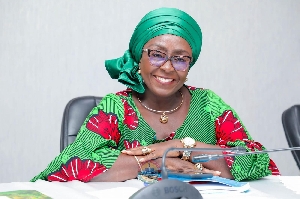Amid the sustained historic slide of the cedi, the Director of Research at the Institute of Economic Affairs (IEA), Dr. John Kwakye, is proposing a raft of measures – immediate to long term – to stabilise the local currency on a “lasting basis”.
In 2022, the currency depreciated by 30 percent against the US dollar, followed by a 27.8 percent depreciation in 2023. So far this year (as of May 16, 2024), the cedi has lost another 13.7 percent of its value, according to Bank of Ghana (BoG) data.
This recent decline is part of a long-term trend, Dr. Kwakye noted in a communiqué. Since the country adopted a flexible exchange rate system in 1983 when the cedi was pegged to the dollar at GH¢2.75, the currency has steadily lost value, with only brief periods of stability.
The exchange rate is currently around GH¢13.77 to US$1 (or 137,700 old cedis to US$1), representing a cumulative depreciation of a staggering 99.99 percent over the past 41 years, with the economist warning it faces an “existential threat”.
“Measures to address the incessant depreciation must aim at dealing with the underlying determinants of FX demand and supply. The measures must also have timelines, which we have conveniently categorised into the fire-fighting, short-term, medium-term and long-term phases.
“The measures for these phases are not necessarily to be undertaken sequentially. Indeed, many of them are required to begin today and to run simultaneously in order to achieve maximum impact,” Dr. Kwakye said of the measures.
Dr. Kwakye emphasised the limited options available for immediate intervention but highlighted the critical steps that could be taken. One of the primary recommendations is the acceleration of external debt restructuring.
“The immediate option we can think of is for the government to engage with both the IMF and the external creditors to reach an early agreement on the external debt restructuring exercise,”Dr. Kwakye noted.
This move is expected to unlock the third tranche under the IMF’s Extended Credit Facility (ECF) programme, subsequently releasing funds from other development partners like the World Bank and the African Development Bank.
Another key recommendation is the strict enforcement of FX market regulations. “BoG should step up the enforcement of FX market regulations,” noted the former member of the BoG’s Monetary Policy Committee.
This includes measures such as FX carry-on limits for travellers, supportive documentation for FX purchases and prohibitions on pricing goods and services in FX. These regulations are intended to curb speculative demand and stabilise the market.
Additionally, Dr. Kwakye stressed the importance of combating illegal FX dealings through enhanced surveillance and coordination with security agencies. “Checking these illegal FX dealings would help stem the tide of FX demand,” he explained.
Short-term measures (2024-2025)
In the short term, he proposed several measures to boost FX supply and control demand. One such measure is the negotiation with foreign companies to stagger the repatriation of their profits and dividends.
Dr. Kwakye suggested that “BoG negotiate with the foreign companies to stagger the repatriation of their profits and dividends and other transfers to their parent companies and branches to ease the seasonal pressure on the FX market”.
The regulation of forward FX market trading is also highlighted as a necessary step to limit speculative activities.
“It is important for BoG to strictly regulate the forward FX market trading to limit speculative activities and their effect on current and future exchange rates,” Dr. Kwakye said.
Maintaining fiscal discipline is crucial, as persistent fiscal deficits fuel demand pressures.
“Maintaining fiscal discipline, whereby government keeps to the statutory deficit ceiling of 5 percent of GDP, is critical for controlling FX demand pressures and the exchange rate,” Dr. Kwakye advised.
Medium-term measures (2024-2027)
For the medium term, the IEA director recommends building up FX reserves to at least 70 percent of the currency in circulation. “We propose that BoG progressively build up its FX reserves to at least 70 percent of the currency in circulation over the medium term to provide adequate cushion for the cedi,” Dr. Kwakye stated.
Consideration is also given to adopting dollarisation on a temporary basis or establishing a currency board system. Both options are aimed at providing stability, though they come with potential risks and limitations.
Long-term measures (2024-2030)
Long-term measures focus on expanding export earnings and industrialisation. Dr. Kwakye stressed the need to diversify and add value to exports such as cocoa, minerals and oil.
“Increasing our export earnings is critical to achieving exchange rate stability,” Dr. Kwakye explained.
Industrialisation is seen as a key strategy to reduce import dependence and increase FX earnings.
“We need to expand our industrial base to produce selected goods for local consumption and for exports,” he said.
The report also called for greater ownership of natural resources and strategic national assets.
“It is about time we assumed maximum ownership of our natural resources and process them locally to increase their FX returns,” Dr. Kwakye remarked.
Business News of Tuesday, 21 May 2024
Source: thebftonline.com

















